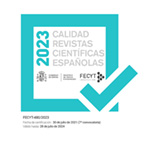El cambio geopolítico global en la era de la Posguerra Fría
Resumo
A evolução do sistema geopolítico global segue princípios evolutivos orgânicos. O sistema é complexo. Caracteriza-se por uma estrutura espacial hierárquica flexível, especializada e integrada. O desequilíbrio global é condicionado pelas mudanças entre os domínios estratégicos e suas regiões geopolíticas. O desequilíbrio reflete principalmente as diferenças nos níveis de entropia dos principais Estados-nação, particularmente as potências de primeira e segunda ordem. À medida que o poder se espalha pelo sistema mundial em mudança, o sistema é mais capaz de lidar com o impacto da mudança. Um sistema em mudança se reflete na multiplicação de suas partes. O sistema se torna mais integrado quando essas partes se tornam mais especializadas. Um novo exemplo de especialização é a região “portal” (Gateway). A Europa Oriental está emergindo como a porta de entrada que conectará os “domínios geoestratégicos” (Geostrategical realms) marítimos e continentais. Finalmente, o “cinturão de fragmentação” (Shatterbelt) do Oriente Médio também pode adquirir o status de portal. Além disso, nas próximas décadas, é provável que surjam cerca de trinta Estados portais. São pequenos Estados, de troca, com soberania qualificada, que se desvincularão das entidades nacionais existentes para ajudar a conectar o sistema mundial. Esses portais servem ao sistema dinâmico como estruturas de acomodação. A política externa dos EUA precisa se adaptar às realidades geopolíticas atuais. O sistema global está se tornando cada vez mais uma rede fluida cuja característica fundamental é o equilíbrio dinâmico, e não uma ordem rigidamente imposta. A liderança dos EUA não pode impor uma Pax Americana ao sistema global. Ela pode, entretanto, impulsionar seu desenvolvimento com uma série de estratégias políticas cuidadosamente desenhadas que fortalecerão a interdependência global com parcerias baseadas em interesses.
Downloads
##submission.format##
Licença
La revista Geopolítica(s). Revista de estudios sobre espacio y poder, para fomentar el intercambio global del conocimiento, facilita el acceso sin restricciones a sus contenidos desde el momento de su publicación en la presente edición electrónica, y por eso es una revista de acceso abierto. Los originales publicados en esta revista son propiedad de la Universidad Complutense de Madrid y es obligatorio citar su procedencia en cualquier reproducción total o parcial. Todos los contenidos se distribuyen bajo una licencia de uso y distribución Creative Commons Reconocimiento 4.0 (CC BY 4.0). Esta circunstancia ha de hacerse constar expresamente de esta forma cuando sea necesario. Puede consultar la versión informativa y el texto legal de la licencia.









